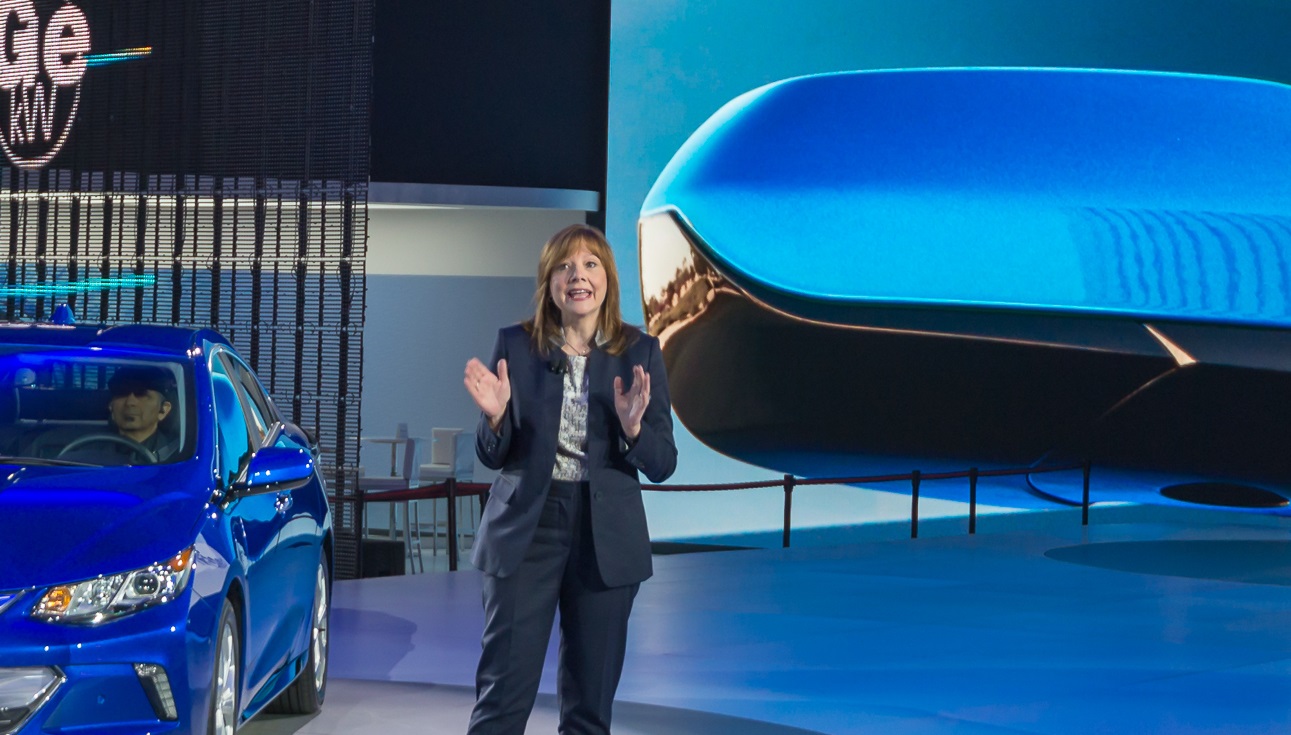General Motors’ AI Revolution: How Mary Barra Is Steering GM Into the Future
In October 2025, General Motors unveiled a sweeping new software strategy, introducing a conversational Google Gemini AI assistant in vehicles from 2026 and a fully hands-free, “eyes-off” driving system by 2028. Under CEO Mary Barra, GM is transforming from a traditional automaker into a mobility and AI-driven technology platform with significant financial, legal, and consumer implications.
A New Era for GM — and the Business of Mobility
General Motors is no longer just a car manufacturer; it’s positioning itself as a technology and mobility company. At its “GM Forward” event in Detroit on October 22, 2025, GM announced an ambitious roadmap featuring Google Gemini-powered in-car AI, a new “eyes-off” autonomous driving system, and a unified central computing platform that will underpin its next generation of vehicles.
These announcements reflect a decisive shift under CEO Mary Barra, who has long pushed for GM’s digital transformation. “Our vision is to create a car that knows you, that looks out for you, and just meets your needs,” said Sterling Anderson, GM’s Chief Product Officer, during the event.
The news comes as GM’s share price (NYSE: GM) remains steady following stronger-than-expected Q3 earnings and a raised annual forecast. Investors appear cautiously optimistic that this time GM’s tech transformation might truly deliver.

Mary Barra, CEO of General Motors
Finance & Investment Angle: Where Software Meets Shareholder Value
The financial implications of GM’s new direction are huge. The company reported $187.4 billion in revenue last year, up 9.1 %, and now aims to diversify that income through subscription-based software services and autonomous driving technologies.
GM has already recognized $2 billion in software services revenue this year, with an additional $5 billion in deferred revenue, up 90 % from 2024. These figures signal growing investor confidence in GM’s ability to turn software into a recurring income stream.
According to CNBC, the company’s move toward integrated AI and connected-vehicle platforms could “reshape the future of consumer mobility,” while Bloomberg analysts note that “software margins can exceed those of traditional manufacturing by several multiples."
However, the stakes are high. GM’s shift depends on consistent software updates, regulatory approval for higher levels of autonomy, and maintaining user trust in AI systems. A single data-privacy failure or safety incident could damage both reputation and share value.
What’s Next for GM’s AI and Autonomy Push
1. Conversational AI Assistant (Launching 2026)
Powered by Google Gemini, the in-vehicle AI will allow natural speech interaction between driver and car. Drivers will be able to ask the vehicle for navigation, maintenance updates, scheduling, or personalized driving suggestions — all through natural conversation.
2. “Eyes-Off” Autonomous Driving (Arriving 2028)
Debuting in the Cadillac Escalade IQ EV, the technology will allow drivers to remove their hands and eyes from the road under specific conditions. It uses lidar, radar, and cameras for real-time mapping and hazard detection.
This step moves GM into Level 3 autonomy, a leap that carries major legal and safety implications. Regulators in the U.S. and abroad are closely watching how GM’s system defines “driver responsibility.”
3. Centralized Computing Platform
From 2028, GM vehicles will shift to a single, high-speed computing architecture that increases AI performance up to 35 times and allows near-instant over-the-air software updates. This approach mirrors Tesla’s vertical integration strategy — but GM is betting on multi-partner AI ecosystems instead of building everything in-house.
4. GM Energy Expansion
Starting 2026, GM’s Energy Home System will let EV owners lease vehicle-to-home and solar-integrated battery systems, reducing dependency on the grid and rivaling Tesla Energy.
Legal and Regulatory Risks: The Road Ahead
As GM inches closer to hands-free driving, it faces increasing scrutiny from regulators and lawmakers. Systems that enable “eyes-off” autonomy challenge current definitions of driver liability in both the U.S. and Europe.
Data privacy is another focal point. With vehicles now collecting vast amounts of behavioral data, GM’s collaboration with Google demands strong governance and transparent user consent policies. A TechCrunch analysis highlighted that GM’s AI systems are being built with a “privacy-first” framework, requiring explicit opt-ins from users.
This cautious approach reflects lessons learned from past missteps, including the Cruise robotaxi shutdown, which drew regulatory backlash in 2024.
Will Mary Barra’s Bet Pay Off?
Barra’s leadership has long been defined by her willingness to pivot GM toward the future — first with EVs, now with software and AI. The GM Forward event demonstrates that she sees technology not just as an add-on but as the core of GM’s next-decade identity.
According to analysis reviewed by CEO Today, this strategic transition could position GM as a global AI-mobility powerhouse, provided it executes responsibly and maintains consumer trust.
GM’s challenge is balancing innovation with regulation, ambition with caution. If it succeeds, Barra may well cement her legacy as the CEO who transformed General Motors from a 20th-century automaker into a 21st-century technology platform.
The Bottom Line
GM is betting billions on the idea that the future of driving is intelligent, connected, and autonomous. With software revenue climbing, a strong balance sheet, and a pragmatic legal framework emerging, the company appears poised for a genuine reinvention.
For consumers, that means a smarter car that acts more like a digital assistant.
For investors, it means new revenue potential in subscriptions and AI-enabled services.
And for regulators, it means a new frontier in defining what it truly means to drive.
Frequently Asked Questions
1. What is GM’s partnership with Google Gemini?
GM is integrating Google Gemini’s conversational AI into its infotainment system, allowing drivers to naturally interact with their cars for navigation, maintenance, and in-vehicle assistance.
2. When will GM’s “eyes-off” driving feature be available?
The technology is set to debut in 2028 on the Cadillac Escalade IQ EV and will expand to additional models afterward.
3. How will this affect GM’s stock and investors?
If successful, GM’s shift toward AI and software could boost long-term valuation by diversifying revenue sources and enhancing profit margins, though legal and safety risks remain significant.
Watch GM’s full “GM Forward 2025” presentation on YouTube here:
🎥 GM Forward: The Future of Intelligent Mobility (Official Video)













